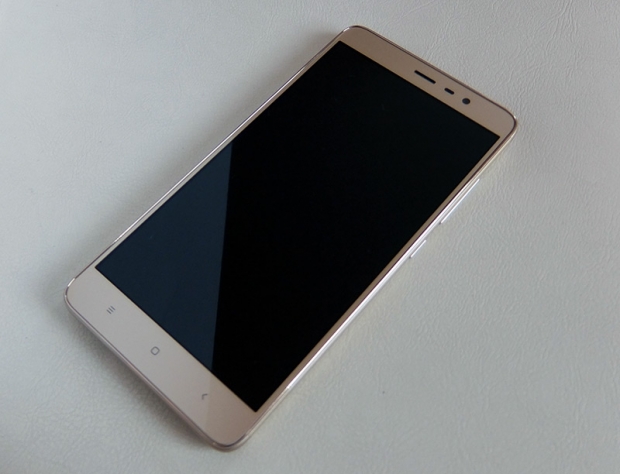Index
Review: 4000mAh battery and fingerprint scanner in tow
The Redmi Note 3 is Xiaomi’s latest phone, and if the name sounds familiar, you’re might be thinking about the Note 2, which came out a few months ago.
We had a chance to review the “old” Redmi Note 2 and we were impressed by the value and performance of Xiaomi’s budget phablet. The Note 3 is based on the same hardware, but it has a metal body with a fingerprint scanner at the back. Unlike the Redmi Note 2, the new metal Redmi is a quasi-unibody design, and there’s no microSD slot or removable battery.
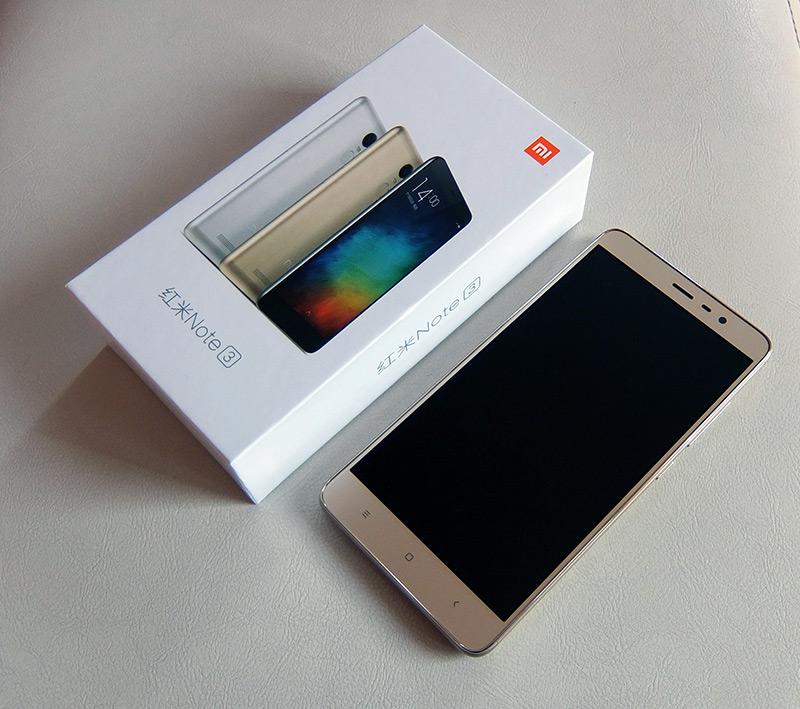
So what’s the idea behind the Redmi Note 3, and what makes it important for Xiaomi. For starters, the company’s Mi4 flagship is getting old, yet the successor is still months away. Xiaomi obviously waited for new hardware to become available, and we can’t blame them, considering all the negative press Qualcomm’s Snapdragon 810 got earlier this year.
The Redmi Note 3 sits halfway between the rest of the Redmi family and the flagship Mi series. It’s supposed to offer better build quality and a few additional features that make it stand out in the Redmi branch, but it’s not exactly a Mi product because it’s not based on a high-end processor.
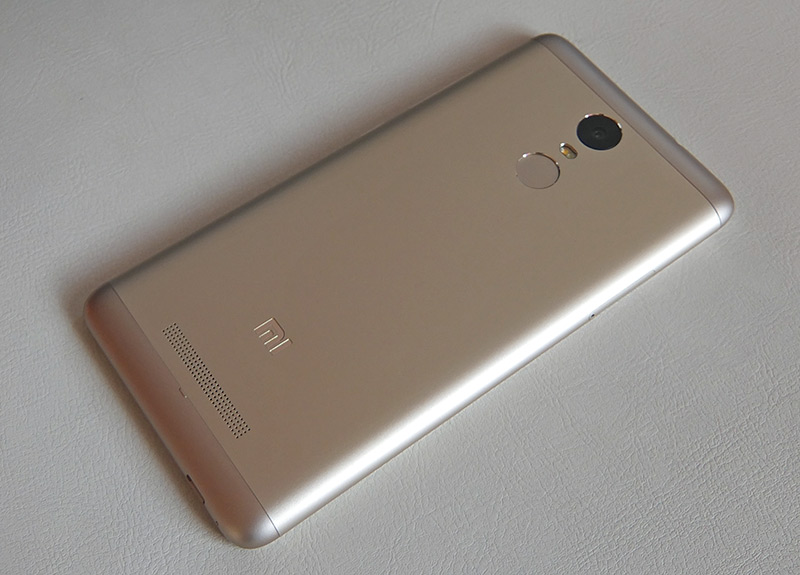
Basically, the Redmi Note 3 is supposed to bring a dash of class to the Redmi family, at a small premium. The 32GB model comes with 3GB of RAM, while the 16GB version has 2GB, like the Redmi Note 2. Our 16GB sample was provided by BangGood, which sells it for $179. The 32GB model comes with 3GB of RAM, while the 16GB version has 2GB, like the Redmi Note 2. The 32GB model is bound to be popular because Xiaomi dropped the microSD slot from the Redmi Note 3, so if you want more than 16GB of storage, you'll have to get this version, which sells for $209.
The rest of the spec is almost identical across the range: MediaTek Helio X10 processor, 5.5-inch 1080p panel, 13-megapixel PDAF camera and so on.
The biggest difference is the appearance and metal build, so let’s take a closer look.
Design and Build Quality
No, this is not a Meizu, it’s a Xiaomi. The design clearly resembles Meizu 5.5-inch metal phones like the MX5 and M2 Note, but the fingerprint scanner is a giveaway.
The Redmi Note 3 doesn’t look like any Xiaomi phone that came before it, and that was sort of the idea behind its design. It’s the company’s first aluminium phone and it’s understandable the designers wanted to go for a different look. Still, there is some Redmi DNA in the design.
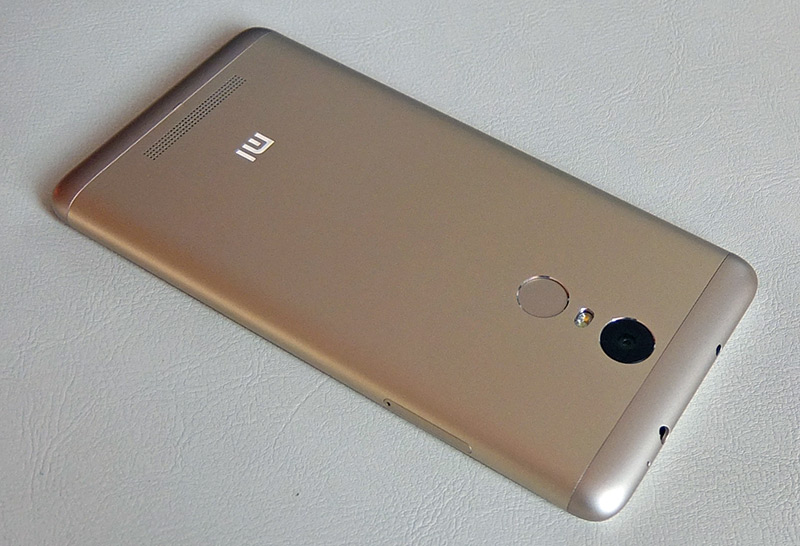
The camera is placed on the centre of the phone, next to the dual-LED flash and fingerprint reader.
The Mi logo is where you’d expect it to be, along with the speaker grille.

The capacitive buttons are white rather than red. Xiaomi usually used red backlighting on Redmi-series devices, while Mi flagships and mid-range designs like the Mi4c/i got white backlighting.
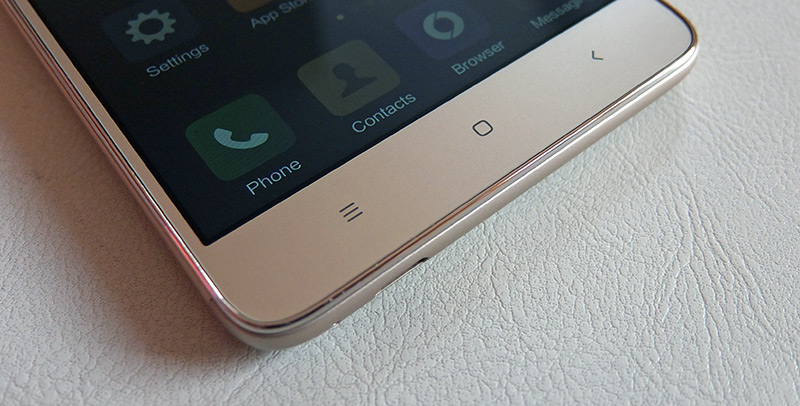
Does the Redmi Note 3 look like an iPhone? Well, to a certain extent it does, but it’s a lot closer to Meizu in terms of device. There’s no 2.5D glass, the profile is different to what we see on iPhones, there is no physical home button, and the fingerprint reader is located at the back.

In any case, the design is not too original or too exciting, but it works. The phone gives off a premium vibe, no doubt about that, and you get a choice of three classy colours: silver with white front, grey with a black face, and gold.
As you can see, we received a gold sample and the tint is very subtle, so you end up with a champagne coloured phone. At night, the colour is reddish, looking almost like some sort of copper alloy. Overall, it’s a nice colour, but if you are looking for something that won’t stand out, the grey/black colour option is the one to go for. Here's the new Xiaomi on top of a couple of gray and silver tablets.

Another thing worth mentioning is the size. You’d expect a phablet with a 4000mAh battery to end up big and chubby, and at 150 x 76 x 8.65mm, the Redmi Note 3 is not the thinnest phablet out there. However, it not too tall, and considering the battery capacity, it doesn’t look chubby.
It doesn’t feel fat, either. At 160g, the Redmi Note 3 is just 4 grams heavier than the Note 2, yet it packs a 1000mAh bigger battery in an all-metal body. That’s impressive, and Xiaomi also makes a point of having the biggest battery in such a light device (5.5-inch phones with 4000-5000mAh batteries usually weigh 175-200 grams.

So what about the build quality? Long story short, it’s good, but it’s not all metal. There are no antenna cut-outs on the back and sides; the antennas are placed under two caps at the top and bottom of the phone. However, thanks to the metal back, the Note 3 looks and feels more upmarket than the plastic/polycarbonate Note 2.
Although this is Xiaomi’s "first metal phone", let’s not forget that the company has a reputation for top notch build quality, and it used aluminium and steel in a number of previous products.
Xiaomi says it uses “120-point ultra-fine double-sided sandblasting” to achieve a premium finish on the Note 3. While it’s a mouthful, the sandblasting process does the trick: the phone feels like a flagship, no question about that. The finish is smooth, consistent, and the assembly process appears to be just as good, so the gaps are really tiny (you literally can’t get a hair in there).
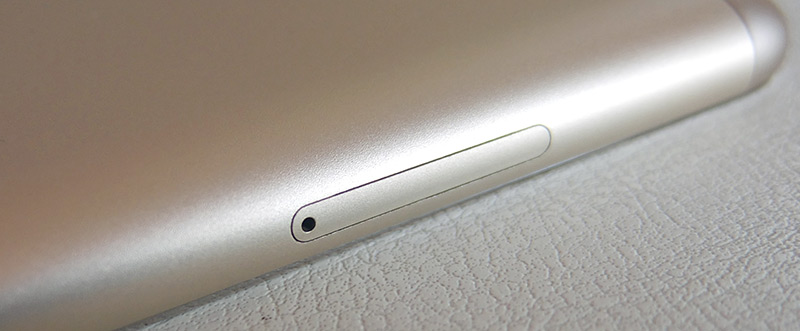
Like we said, it’s not really an “all-metal” phone. The aluminium back is topped off with a couple of curved plastic elements on the top and bottom. While they share a very similar finish to the aluminium chassis, the tactile feeling is different. They’re a bit smoother.
In other words, the back is metal, but not entirely.

Since Xiaomi hasn’t given into the 2.5D curved glass craze, the screen is flat. It’s flanked by a small plastic rim that should help keep dirt and scratches away. On this particular colour option, the rim is chromed, and it feels a tad too “blingy”. Xiaomi doesn’t specify what sort of glass is used, but the company has a habit of using Corning glass across its smartphone range.
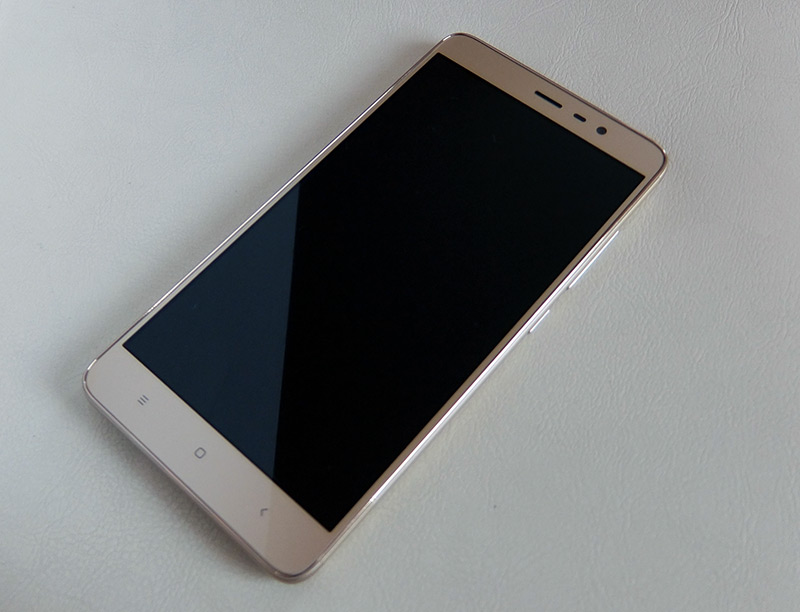
One more thing: The Redmi Note 3 doesn’t look like any Xiaomi phone to date, but it looks eerily similar to the new Xiaomi MiPad 2 tablet (which looks like an iPad mini, but we’ll get to that when we review the MiPad 2). We could be missing the bigger picture here. The MiPad 2 proves the Redmi Note 3 is not a one-off design, so we could more curved aluminium on Xiaomi products in the future. The jury is still out on the Mi5, but we should see it soon.
Xiaomi Redmi Note 3 Specs and Performance
This feels like a repeat of our Redmi Note 2 review, so we’ll just paste the same spec sheet and tweak it a bit. Both phones are based on MediaTek’s latest Helio X10 mainstream processor, but while the Note 3 maxes out at 2GHz, the Prime version of the Note 2 can hit 2.2GHz.
In our Redmi Note 2 review, we concluded that the extra 200MHz probably isn’t worth it, and it seems like Xiaomi’s decision to keep the processor at 2GHz has vindicated us. Moreover, Xiaomi appear to have bumped the GPU clock to 700MHz, which should deliver a nice performance boost in 3D applications.
These aren’t not the only differences, so let’s take a closer look at the specs.
Xiaomi Redmi Note 3 specs:
- SoC: MediaTek Helio X10 (MT6795M), 28nm
- CPU: Eight Cortex-A53 cores up to 2GHz
- GPU: Imagination Technologies PowerVR G6200 GPU up to 700MHz
- RAM: 2GB LPDDR3 933MHz (3GB on 32GB model)
- Storage: 16GB/32GB eMMC 5.0 internal storage (single partition), non-expandable
- Display: 5.5-inch 1080p IPS panel
- OS: Android 5.0.2 / MIUI 7
- Rear camera: 13-megapixel Samsung sensor, f/2.2 aperture, PDAF, 78 degree lens
- Front facing camera: 5-megapixel Omnivision OV5670 sensor, f/2.0 aperture, 85 degree lens.
- Battery: 4000mAh lithium polymer, non-removable
- Dimensions: 150 x 76 x 8.65mm (Redmi Note 2: 152 x 76 x 8.3mm)
- Weight: 164g (Redmi Note 2: 160g)
- WiFi and Bluetooth: 802.11b/g/n/ac WiFi and Bluetooth 4.0
- Sensors: ambient light, direction, accelerometer, compass, proximity, GPS, A-GPS
- Other noteworthy features: IR blaster
- SIM card: dual SIM (micro SIM), dual standby
- Network support:
2G: GSM 900/1800/1900MHz
3G: WCDMA 850/900/1900/2100MHz
4G: FDD-LTE: 1800/2100/2600MHz, TDD-LTE: B38 / B39 / B40 / B41 (Make sure to check regional compatibility prior to making a purchase)
So what’s different? For starters, the Note 3 feels a bit smaller. The Note 2 is 2mm taller, but it’s also 0.3mm slimmer. However, thanks to the curved design, the Note 3 doesn’t look or feel thicker. It also looks even shorter, and the weight difference is negligible. When we factor in the extra battery capacity, all we can say is kudos to Xiaomi designers and engineers.
It’s not all good news. While you get 3GB of RAM on the 32GB version, the 16GB version ships with 2GB of RAM. That’s not a deal breaker in this price category, but the fact that there’s no microSD slot is a big deal. With no expandable storage, it’s obvious that the 32GB model is the one most people will go for. It’s not expensive, but if you compare the entry-level 16GB Redmi Note 2 to the 32GB Redmi Note 3, the price gap widens to about $50. Bear in mind that you still get the same processor and camera on both devices (not to mention loads of other bits).
In Antutu, the Note 3 ends up marginally slower than the Note 2.
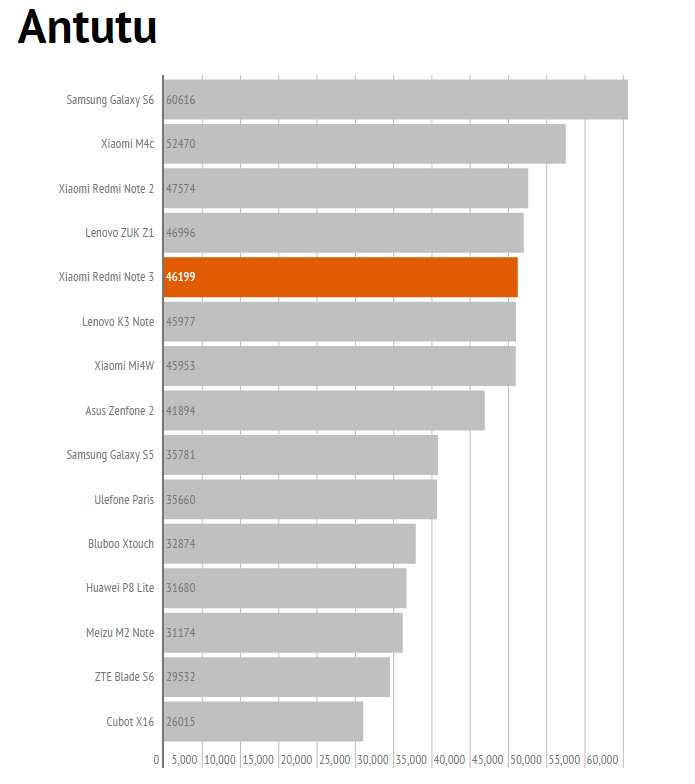
We see the same thing in Basemark OS II and Geekbench Single Core.
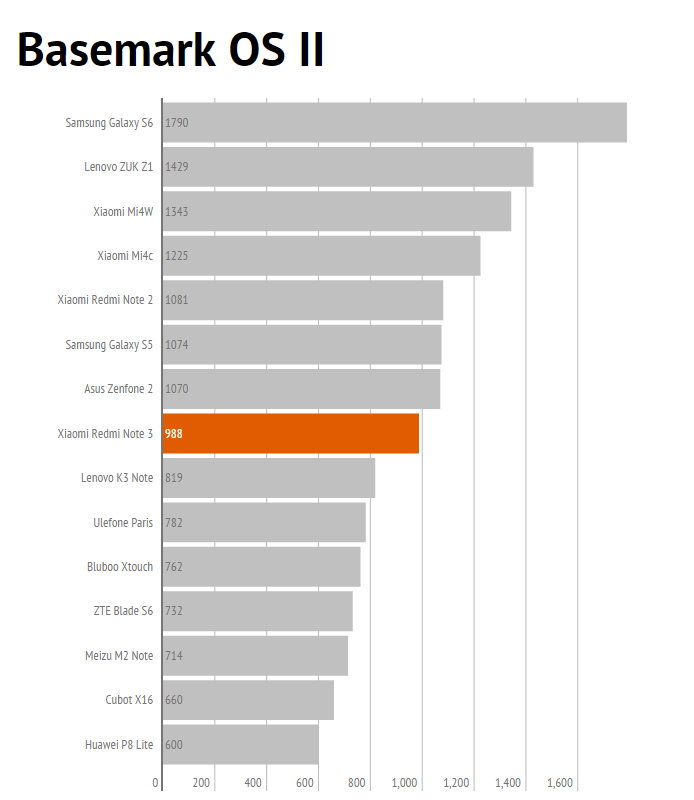
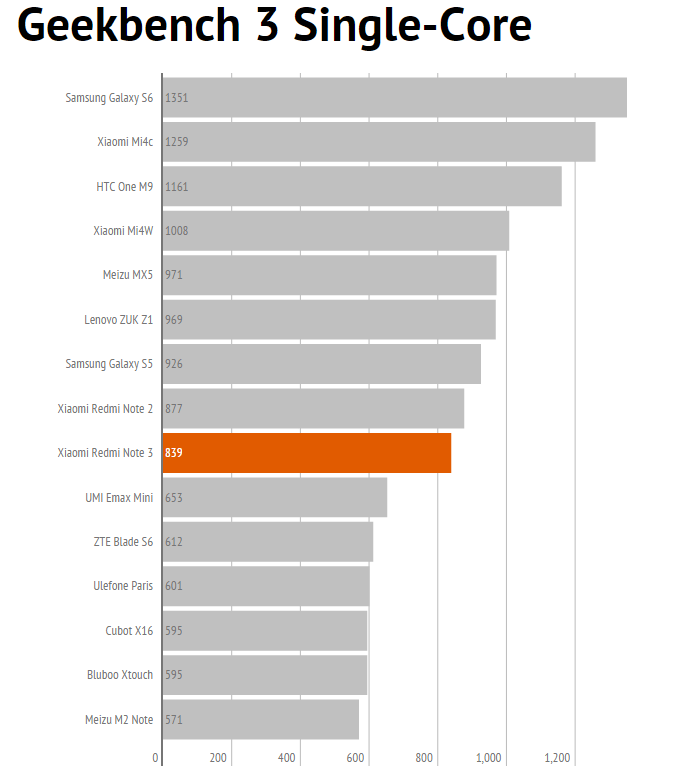
However, in Geekbench Multi Core, the Note 3 ends up with a better score, outperforming the Note 2, as well as phones based on Snapdragon 808 and 801 processors.
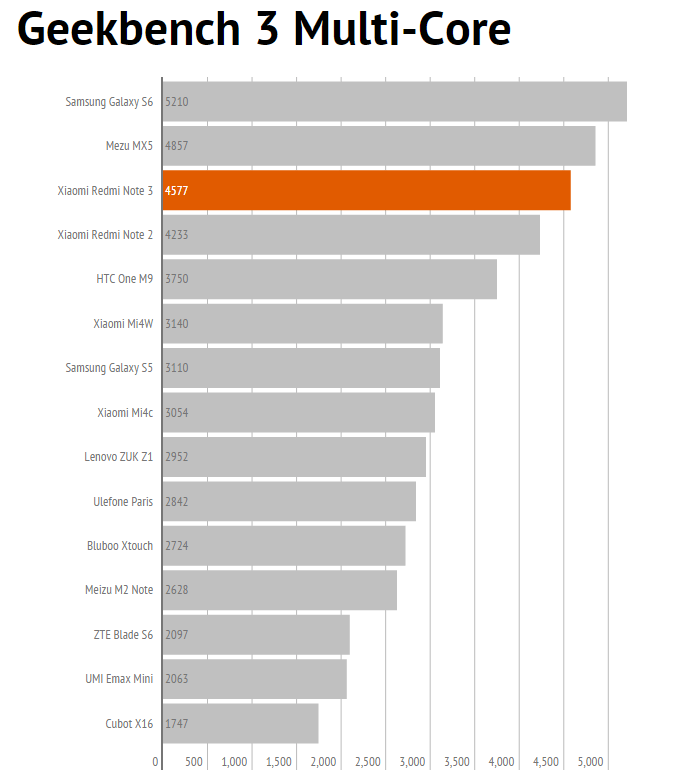
The Redmi Note 3 outperforms the Redmi Note 2 in 3Dmark. While the CPU clock is the same as the plain Note 2, the GPU clock appears to have ended up with a small clock bump. The end result is superior GPU performance. The caveat is that the Redmi Note 2 32GB version ships with a 2.2GHz version of the same chip, with the same GPU clock as the Redmi 3.
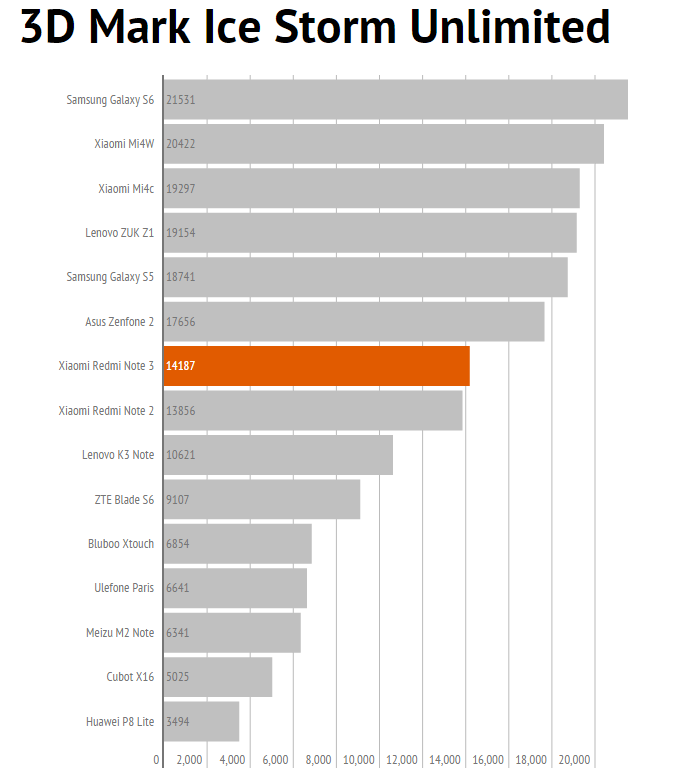
Oh the whole, the results are very close to the Redmi Note 2, which even ends up somewhat faster in certain benchmarks. The Note 3 appears to do better in GPU and multithreaded tests. Unfortunately we did not get a chance to try out the 3GB version, which could provide superior performance in some scenarios. However, at the end of the day, the performance difference between these two devices is negligible.
With a 4000mAh battery and a great speaker, the Redmi Note 3 sounds like a good choice for gamers, but it really depends on the genre. The GPU is not on a par with flagship phones, but it can still deal with most titles effectively.

For example, in World of Tanks Blitz, we got 45-60FPS on high detail settings. We also got five clean kills with our 88.
Audio, Display and Camera Quality
Since the Redmi Note 3 packs a 5.5-inch 1080p panel like the Note 2, we expected an identical visual experience. However, the display on the Note 3 looks a bit better. It’s somewhat brighter than the display on the Note 2, the colours and contrast also look marginally better. It’s not a huge difference, but it’s visible.
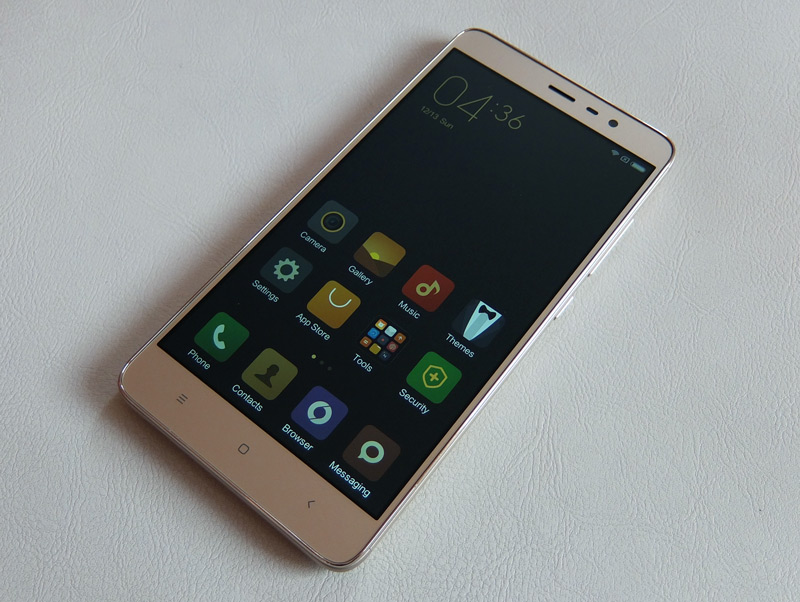
This is good news, because the display on the Note 2 was outshined by some competing devices, namely the Meizu M2 Note.
Audio quality is good. The rear-firing speaker is relatively powerful, but more importantly it delivers consistent quality regardless of volume. Even when it’s maxed out, there are no distortions or vibrations.

Call quality is usually a non-issue nowadays, and the Redmi Note 3 does not disappoint. The phone also appears to have a secondary noise suppression microphone, but we didn't see it in the settings (which allow users to adjust the noise suppression mode on Mi-series phones). In any case, it's on board and call quality should not be a concern.
This brings us to the camera, which is more or less the same unit we had a chance to try on the Redmi Note 2. It’s more or less the same. Xiaomi uses Sony and Samsung sensors in the Redmi 2 and Redmi 3.
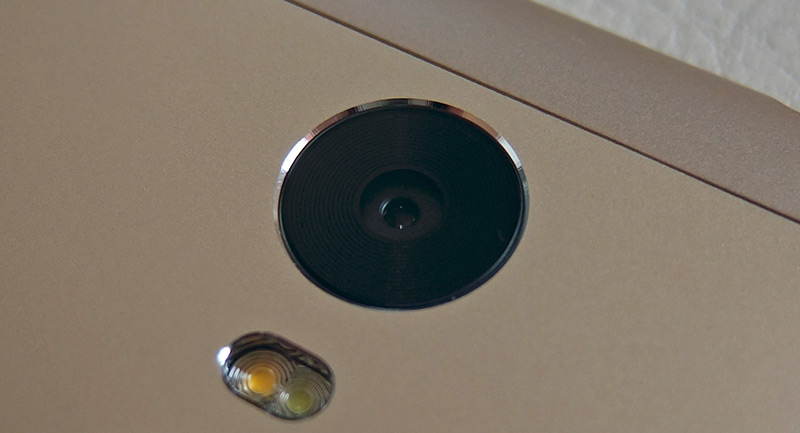
We weren’t too impressed with the camera on the Redmi Note 2, so we don’t expect a big difference with the Note 3, since it shares the same sensor and f/2.2 lens. Don’t get us wrong, the camera is perfectly fine, but we’ve seen competing phablets deliver slightly better overall results.
One feature that makes the camera stand out is phase detection auto focus (PDAF). We explained the concept in our previous reviews, so let’s just say what this neat technology does for the end-user: it enables the camera to focus faster and deliver more consistent results. Long story short: A competing smartphone with a similar non-PDAF sensor behind some better optics could yield somewhat better shots, but the Redmi Note 3 will deliver superior consistency with fewer useless out-of-focus shots.
The other noteworthy feature is the excellent HDR mode. It's fast and the image quality is good as well.
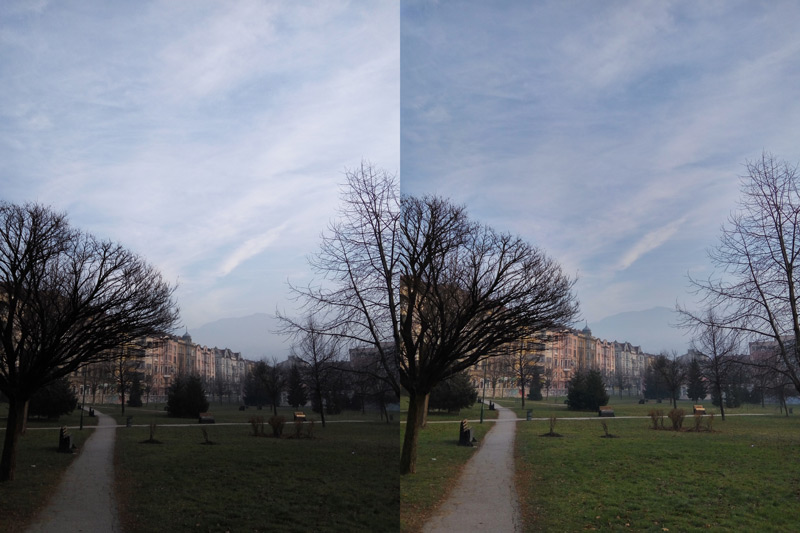
We tried it out at dusk, with a lot of haze and smog, far from ideal conditions. As you can see, the results were quite good.
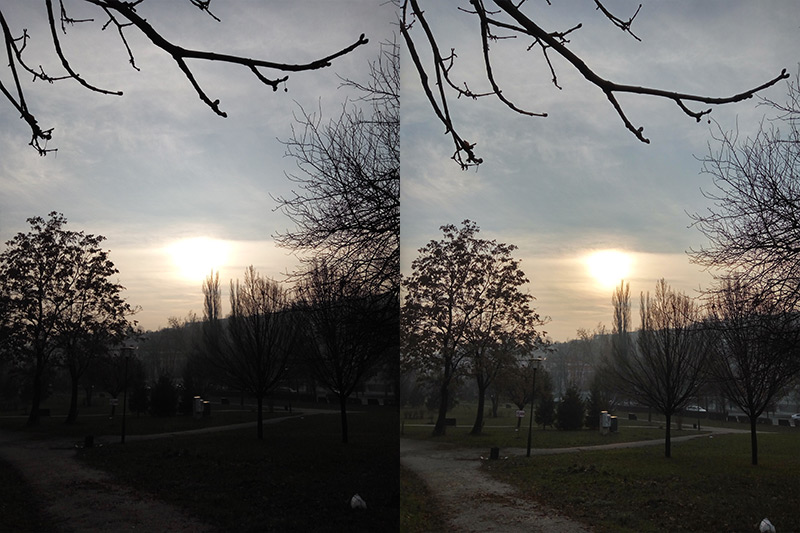

Cropped at 100%, the HDR image still retains a lot of detail.
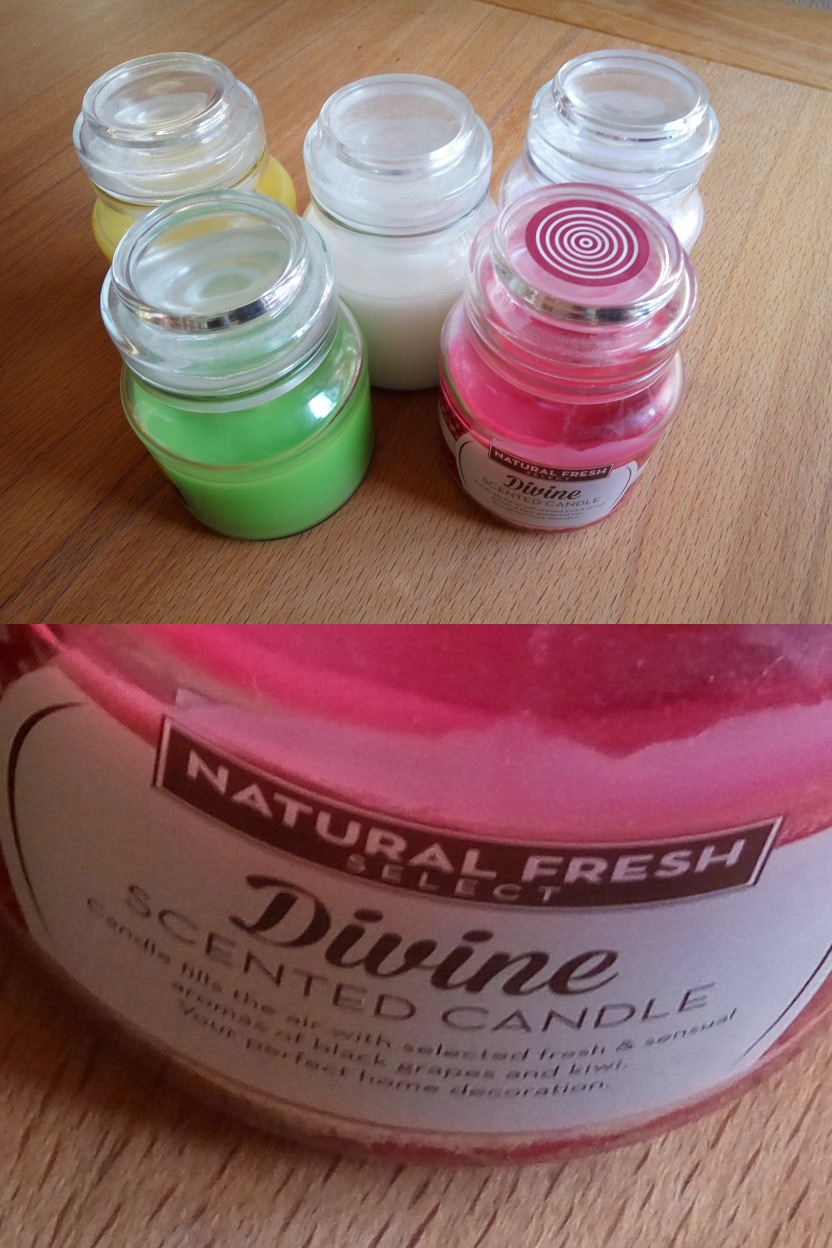
Indoor shots were pleasing as well, by day and night. Still, we should note that low-light performance isn't very good due to the slow aperture and overly aggressive noise reduction algorithm.
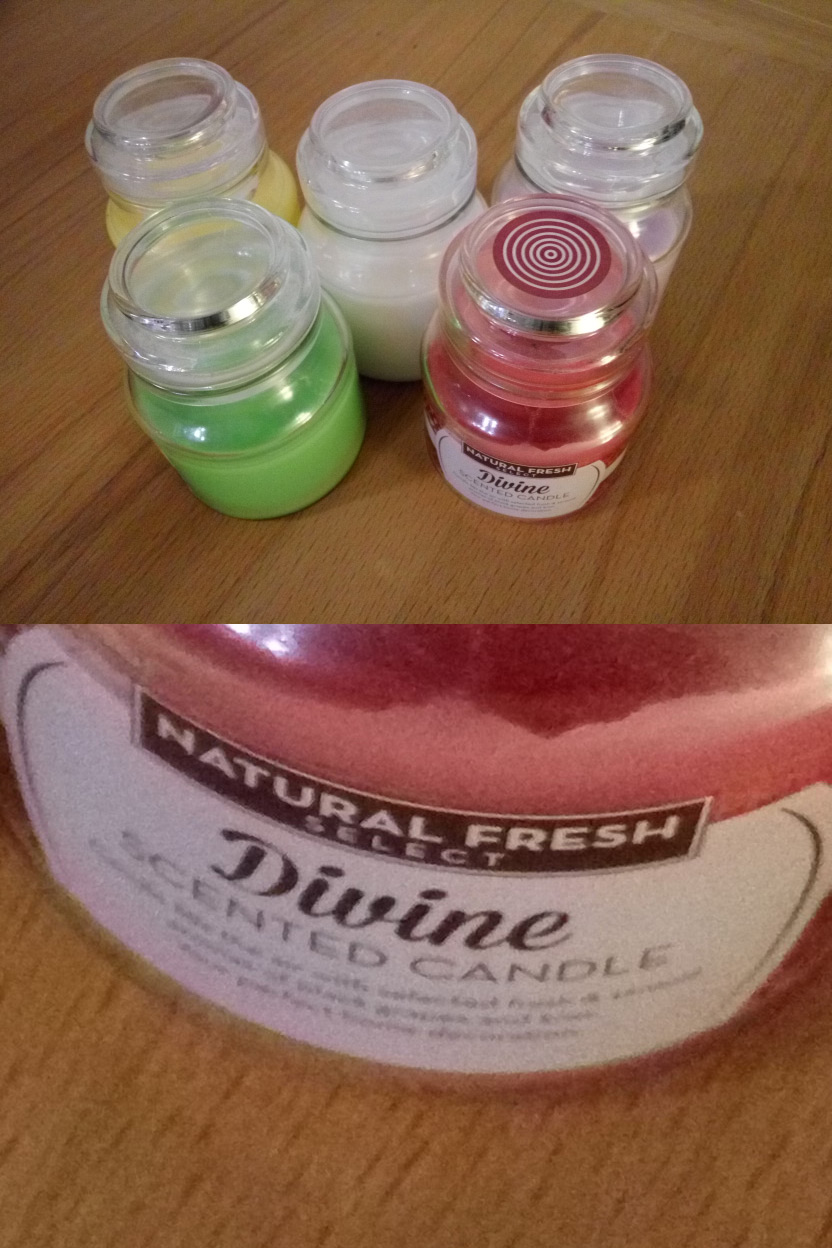
In case you use the LED flash a lot, the good news is that Xiaomi added a second, warm LED to the Note 3, so you get a more powerful dual-tone flash. The Redmi Note 2 relies on a single, cool white LED.

So how does it compare to camera on the Redmi Note 2? At first, we thought it was quite a bit better, but that was down to the differently callibrated displays on the Note 2 and 3. In reality, the photos are very close and it's really hard to point to a clear difference. We did get the feeling that the Redmi Note 3 focuses a bit better than the Note 2, but that might be subjective, or it might be a software tweak that will do the same for the Note 2 in the next update. The hardware appears to be identical, so in the long run you should expect identical performance (and software tweaks on both).

The biggest differences in this Redmi Note 3 vs Redmi Note 2 shot are the parmesan cheese...

....And at 100%, you can see we focused on two different bits of cannelloni.
The front camera is shared with the Redmi Note 2 as well, and we loved it. It's one of the best cameras in the price class, if not the best.
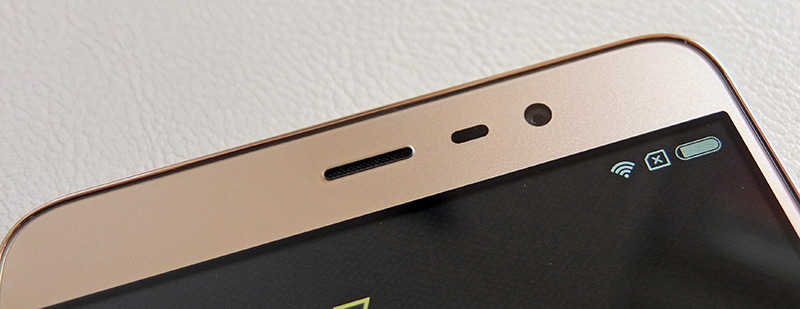
There’s not much to say about the MIUI camera app. It has plenty of useful features and effects, it’s fast as usual, and we have no major complaints.
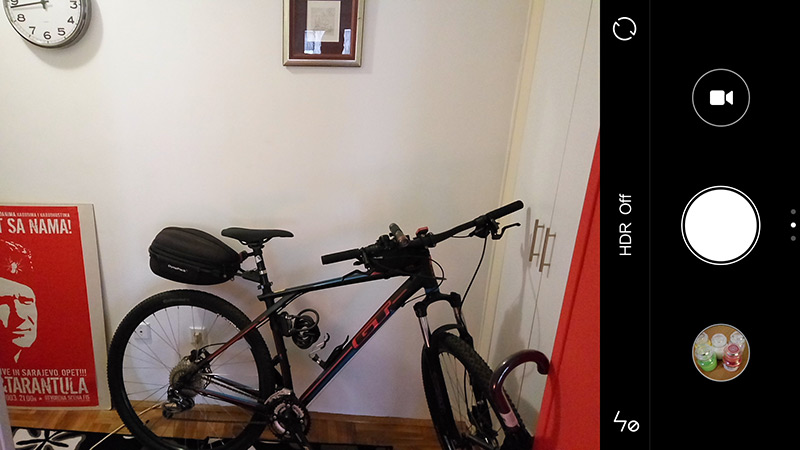
OS, UI and Everyday Use
Unlike the Redmi Note 2, the Note 3 is launching with MIUI 7 out of the box. MIUI 7 is still based on Android 5.0.2 like previous incarnations of MIUI 6, but it offers a few tweaks and new features. Best of all, it completely ditches skeuomorphic design features.
MIUI tends to place an emphasis on visual appearance, and the 7th incarnation of Xiaomi’s Android fork looks great. The user experience is top notch, and a lot of people love MIUI animations, themes and clever shortcuts. Customisation is also a big deal in MIUI. You can transform your phone into a flat, minimalist device, or a steampunkish, skeuomorphic mess, all with a few taps. The stock Xiaomi themes are a good place to start, but if you want some crazy and outlandish themes, you need to browse the Mi market.
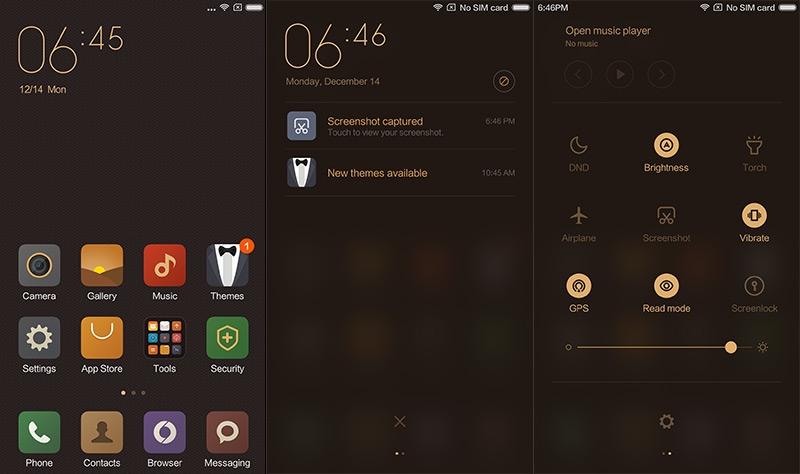
MIUI also loves to hog a lot of RAM, so the added 1GB of memory on the 32GB version could make a difference in some situations.
While we feel MIUI is one of the best Android forks on the market, the UI could still use a few tweaks. One of the more frustrating aspects of the notification system is the fact that you can’t expand or dismiss notifications in the lock screen. You can’t expand them even after the phone is unlocked.
There’s really not much of a difference between the Redmi Note 2 and Note 3 in terms of user experience. The performance differences are negligible in most scenarios, and if you can live with one, you can live with the other. So, we’ll have to look elsewhere to find some significant differences, and the fingerprint scanner seems like the obvious place to start.
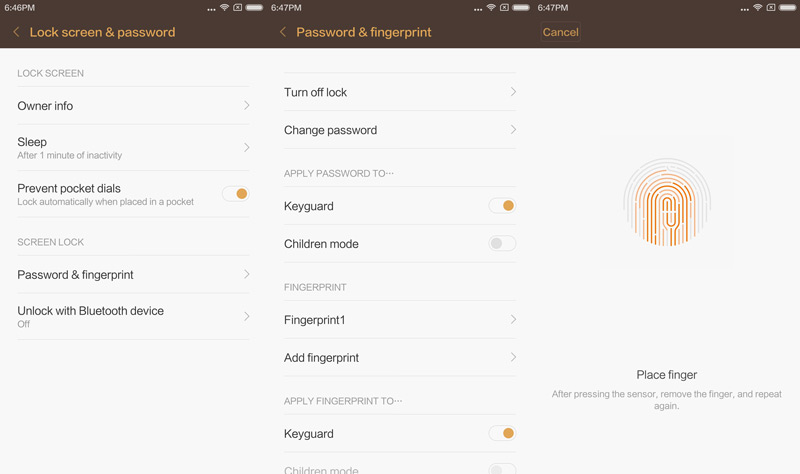
This is the first Xiaomi phone to sport a fingerprint reader, so we were curious about the implementation. It’s basically another lock-screen option and you’ll have no trouble finding it in the menu. Scanning and storing one fingerprint profile takes less than a minute, and you can store multiple profiles.
The scanner is fast and reliable. Unlocking the phone takes less than half a second. Better yet, we got no false positives or false negatives for that matter.

The placement of the scanner on the back is a logical design decision, as it allows for a more compact device (the iPhone 6S Plus is almost a centimetre taller).
On another note, there is one thing we could never get about rear-facing fingerprint scanners: Why do vendors use them for one purpose and one purpose only; to unlock our phones? Humans have ten fingers, and most of us know how to use them, so why not use the fingerprint scanner for multiple shortcuts, using different fingers?
For example, you could launch the camera simply by unlocking the phone with a different finger, let’s say a pinkie. The ring finger could be used for a fast-dial shortcut to call your spouse, while the middle finger would be the obvious and deeply satisfying choice for rejecting calls, especially if you are into contact pics. (Note to self: Patent this in the US. Use this review as an example of prior art if someone beats you to it. Become a patent troll. Buy a yacht. Ed)

The other big deal, or should we say huge deal, is the battery. The Redmi Note 2 ships with a 3000mAh user-replaceable battery, but it’s not marathon runner. The Helio X10 is power-hungry when you push it too hard, which could be one of the factors in Xiaomi’s decision to cap it at 2GHz for the Redmi Note 3.
Thanks to its 4000mAh battery, the Redmi Note 3 can run circles around its predecessors, and indeed most competing devices. If you don’t mess around with your phone all day, you should be able to get two days of battery life out of the Note 3. We did, and we are not exactly moderate users. If you are careful, or if you don’t use a lot of mobile data, three days should be possible as well. Best of all, despite the added 1000mAh, the phone looks and feels more compact than the Redmi Note 2.
Basically, the Redmi Note 3 should give you an extra 6-12 hours of extra battery life if you are a (very) heavy user. Most people should get 12-18 hours extra, if not more, and this is a big deal. If you forget to charge it overnight, chances are the Redmi Note 3 will get you through the day without much hassle, without having to resort to any drastic power-saving measures.

GPS performance is on par with the Redmi Note 2.
Conclusion (Redmi Note 3 vs Redmi Note 2)
Xiaomi’s all-metal design experiment was a success. The Redmi Note 3 delivers great all-round performance and best-in-class battery life. It’s not much better than the inexpensive Redmi Note 2, but then again, it’s not much more expensive, either.
When all is said and done, the Redmi Note 3 and Note 2 are very similar devices, but there are a number of differences, some big, some small. So, which one should you get? If you are only concerned about sheer performance and bang for buck, the Note 2 is the obvious choice. However, we think the Redmi Note 3 is a better choice for most users and here is why: The premium is worth it. It doesn’t cost much more than the Note 2, but it looks more serious and feels more compact. Better yet, it has a much bigger battery, and many users will love it just for the extra battery life.
However, there are a few shortcomings. You don’t get a microSD slot, which is usually present in Redmi-series devices. This means you have just two options: 16GB storage and 2GB of RAM for $179, or 3GB of RAM and 32GB of storage for $209. The lack of microSD support renders the first option a lot less attractive than a plain Redmi Note 2, with 16GB of internal storage and a microSD slot for expansion. So, enthusiasts will have to opt for the pricier model, no question about that.

The good news is that the 32GB model is competitively priced. It’s about $50 cheaper than the Meizu Metal, which has a nearly identical spec, but only 2GB of RAM and a 3140mAh battery. The same is true of other brands: you’d be hard pressed to find a big-brand phone with similar specs and build quality at nearly the same price. Another potential competitor is the Cyanogen-based Lenovo ZUK Z1. It also has a 4000mAh battery, on top of a more powerful processor and 64GB of storage. However, the ZUK Z1 costs ~$100 more than the Redmi Note 3, so they’re really not in the same league.
Bottom line: Xiaomi’s latest Redmi phablet is a killer device, but the marketing department's decision to ditch the microSD slot won't be welcomed by a lot of potential customers. It offers great performance and specs at competitive pricing, and the big battery is just icing on the cake. Can we recommend it? Yep, and we won’t lose any sleep over it.
Xiaomi Redmi Note 3 Pros and Cons
Pros:
- Superb build quality and finish give off a premium vibe
- 4000mAh battery
- Good price/performance ratio
- Reliable fingerprint scanner
- Relatively compact considering the spec
Cons:
- No expandable storage
- 13-megapixel camera delivers average results
- Unoriginal design


